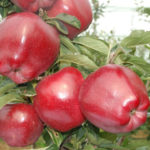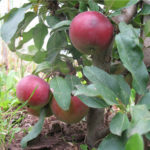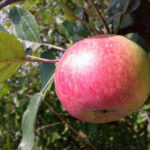Pear variety Abbot Fetel
Plant breeding has been successfully practiced for over a thousand years. At first, individual amateurs were engaged in it, and then this process resulted in a real science, the creation of modern laboratories equipped with special equipment and reagents. But in the 19th century, they did not even dream about it. The main tool of the then breeders was, perhaps, observation. This is how the pear variety appeared in France, which still remains one of the most popular not only in its homeland, but also in Italy, Spain and even in Argentina. There is information that the cultivar is grown in industrial gardens, and is valued in export markets due to the shape and size of the fruit. This is a variety of Abbot Fetel, created in 1869. This ancient variety gained fame in 1876. Over the years, information about his parental forms, of course, has been lost. Describing the culture of L.P. Simirenko noticed that, perhaps, it appeared from a seed of the fruit of Bere Clergeau, the flower of which was allegedly fertilized with the pollen of the pear Good Louise from Avranches (Bon Louise Avranches). But the name of the creator has survived for centuries, because the author of this long-lived plant is Fetel. Of course, this variety is not included in the State Register of Breeding Achievements of Russia, but lovers of this juicy and tasty fruit know about it. There is no official description of this variety, so we will rely on various sources, including the pomological description of L.P. Simirenko. In Russia, Abbot Fetel is cultivated in the southern regions, found in Ukraine.

Description
The plant is medium to vigorous. But Simirenko writes that the tree is "of medium strength or even weaker, chilly." The crown is asymmetrical, wide-pyramidal, rather dense, but easily formed. The foliage is good. In a young tree, skeletal branches are attached to the trunk at an acute angle of 40 - 45 °. With age, they bend back, sometimes they take an almost horizontal position. Annual shoots of pear are straight, long, not thin, the bark covering them is green or light brown with a reddish tint. Lentils are light brown, small and inconspicuous. The bark on the trunk and skeletal branches is gray. The buds of Abbot Fetel are small, wide-cone-shaped, not pubescent, grow, pressed against the shoot, are often located. Leaves are medium in size, light green, obovate, with a small pointed tip. The edges are serrate, with wide teeth. The leaf plate is slightly curved, the edges are raised, and the tip is bent downward. The petiole is short, the stipules are small, subulate, drooping. Fruiting of the variety most often occurs on lances. Branches of 2 - 4 years of age are considered fruitful.
The fruits are original, beautiful, elongated-pear-shaped, or bottle-shaped-elongated (according to Simirenko), asymmetric, with a well-pronounced long neck, which seems to be separated when passing into a wider part. The cup of the fruit of Abbot Fetel is wide, embossed - in tubercles and folds, as if depressed, closed or half-open type. There are practically no funnels. The peduncle is short, obliquely planted, sometimes arcuate, thick, with a slight expansion in the form of a bell at the point of attachment to the branch. Some pears have a small fleshy tubercle at the base. The heart is small, oval, sometimes it looks like an elongated rhombus. The seed chambers are small, semi-closed or closed. The seeds of the variety are of medium size, elongated, brown in color.
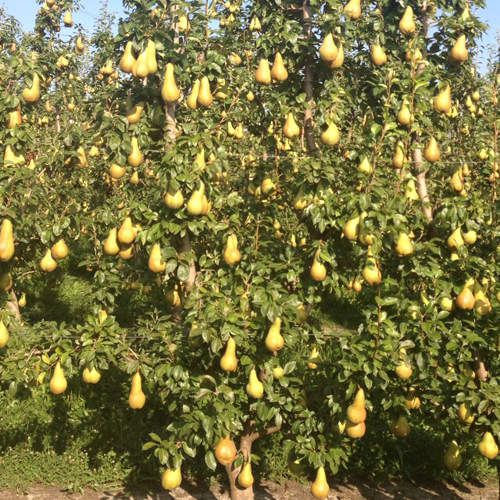
The pears are rather large, the length can reach 20 cm, the diameter at the widest part is 8 cm. The weight is 180 - 250 grams. The skin is thin, but firm, dry to the touch, slightly rough, weak-minded.The main color during the ripeness period is greenish-yellow, in the period of consumer ripeness it acquires a straw-yellow color, the integumentary color appears in the form of a slight blush from the sunny side, there is a slight golden rustiness in the form of small spots scattered over the entire surface of the fruit. Subcutaneous points are light brown, very small, hardly noticeable. The pulp of Abbot Fetel is white or slightly creamy, very aromatic, juicy, tender, melting, oily, aromatic, without hard granules. The flesh tastes sweet, with a pleasant sourness and a delicious nutmeg aftertaste. Assessment of tasters 4.8 points. 100 grams of pulp contains: dry soluble substance 16.5%, sugars 0.3%, acids 0.16%, pectins 0.625%, tannins 0.54%.
Variety characteristics
- The beginning of fruiting depends on the rootstock. On a forest pear, our hero will only bring a harvest for 7 years. But quince is a more successful option, a plant grafted onto it will enter the fruiting period 4 - 5 years after planting. True, compatibility does not occur with any quince, good survival rates only on SYDO (clonal selection of the Angevin quince), MC and EMX * (obtained at the East Mall gardening station in the UK). In our nurseries, either forest pear or quince type A or C are used;
- flowering occurs in the mid-late terms, so you can not be afraid of frost;
- in terms of ripening Abbot Fetel refers to autumn crops. Harvesting maturity occurs in September, at the beginning or in the middle of the month, depending on the weather. Consumer maturity - late September or early October;
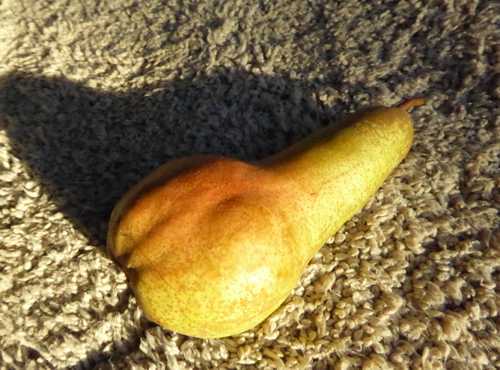
- the yield is average and again depends on the stock. On quince, 5 - 8-year-old trees yield an average of 38.6 c / ha. On a forest pear, productivity increases slowly. By the age of 12, the yield is 10 - 18 c / ha. Simirenko describes fruiting as poor and irregular. But then they were just experimenting with rootstocks;
- winter hardiness is not bad; in unfavorable years, when thaws were replaced by frosts, the indicator of stem damage did not exceed 1 point. Average frost resistance. There is resistance to frost, but in too harsh winters the tree can freeze slightly. True, thanks to its good regenerative ability, it quickly revives. But when choosing a variety, it should be borne in mind that the culture is more common in warm climates;
- immunity is good. There is resistance to scab, a bacterial blight of the leaves shows a weak lesion - by 1 point;
- Abbot Fetel is self-fertile. But still, in order for the pear to please with the harvest of unusual fruits, pollinators are needed nearby. The following varieties are offered as neighbors - Conference, Williams, Carmen, Decana del Comizio;
- due to the dense consistency of the pulp, transportation over long distances, the fruits withstand well;
- keeping quality is very good. Pears can be stored in the refrigerator for about a month, in the basement, subject to storage standards - 3 - 4 months;
- the way of eating fruits is universal. They are used fresh and for processing, and are valuable for the food industry.
Planting and leaving
The term for planting is autumn. It should be noted that Abbot Fetel is quite picky about soil and climatic conditions. As noted by Simirenko, the taste of the variety directly depends on the soil. The best results are achieved only on light, permeable, nutritious and well-heated soils. A correctly selected stock also plays a role. Higher and consistent yields are only possible with proper pruning. For our hero, intensive pruning with shortening of young branches, carried out at the beginning of the growing season, is important. As food, the pear prefers organic matter, but mineral fertilizers, especially iron, are also needed.Watering depends on the type of planting and climate. In intensive gardens at elevated temperatures, the trees will need to be moistened up to 3 times a week. But in an ordinary garden, the moisture requirements are not so high, so you can stick to the usual schedule. Planting pattern from 3.0 m to 3.5 meters between rows, in a row up to 1.0 - 1.2 meters.
Abbot Fetel is a rather capricious culture, but in the warm countries of Europe it is successfully cultivated and highly appreciated for the original appearance and taste of the fruit. The pear is also valued for its good immunity. Also, our hero is of interest as a material for selection. But the yield is low and completely depends on agricultural technology, therefore, for an inexperienced gardener, the cultivation of this ancient variety will be fraught with difficulties. In cool regions, cultivation difficulties arise due to the insufficient level of frost resistance of the variety. Simirenko did not highly appreciate the capabilities of the old variety: "it can take a place only in significant pomological collections, but in the form of individual trees in an amateur's home garden." But modern gardeners, armed with knowledge and technology, successfully grow Abbot Fetel, even on an industrial scale.
